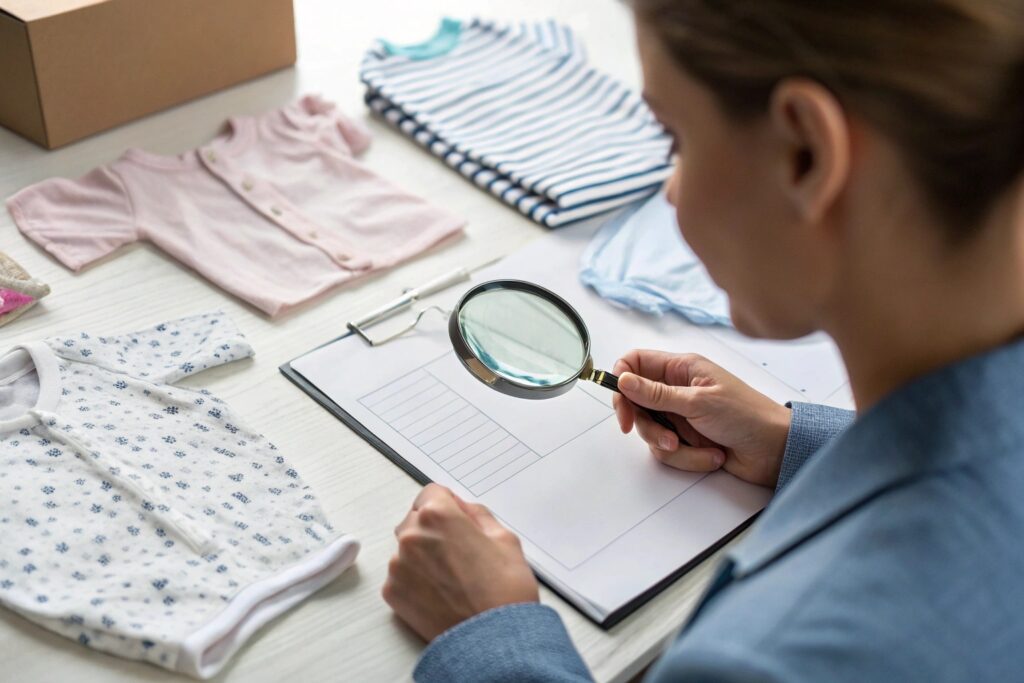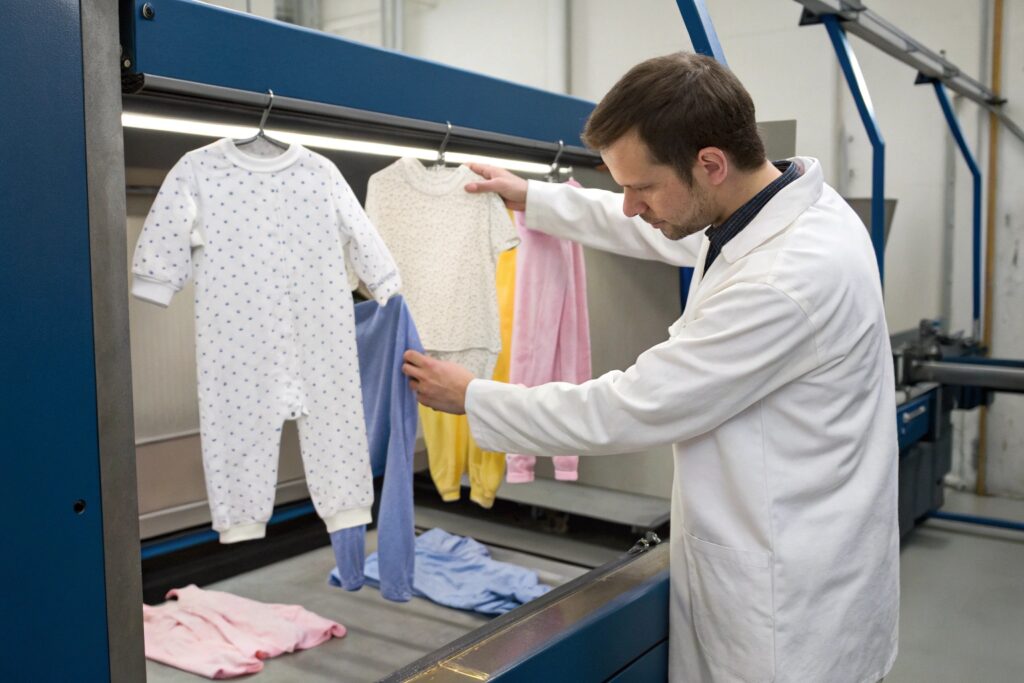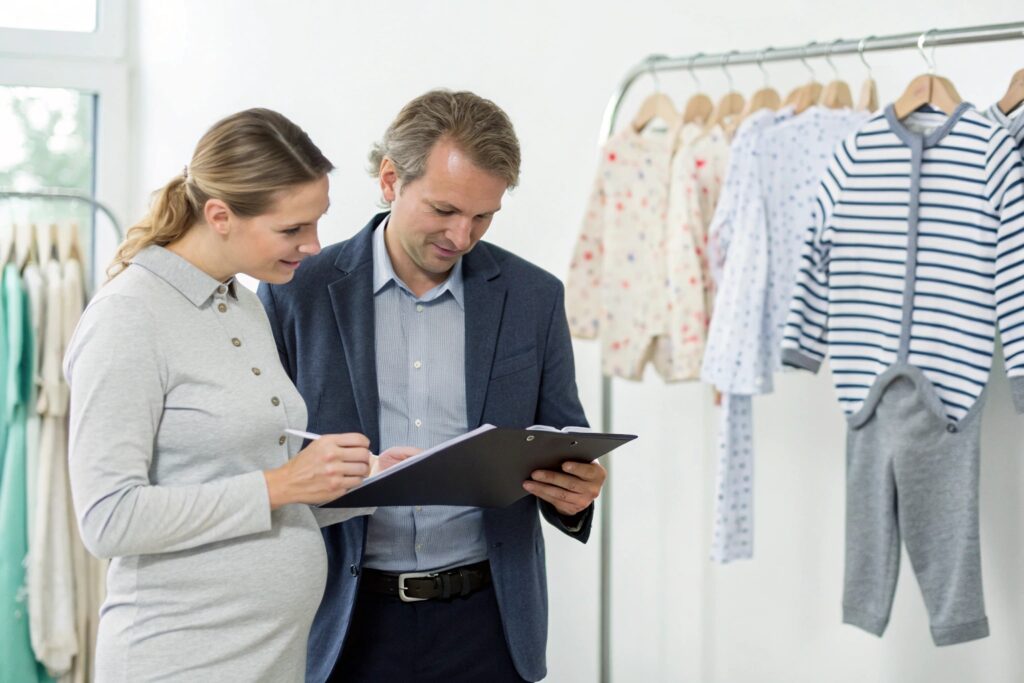Importing kidswear from China can be a smart business move—but if you don’t know the rules, it can also get expensive or delayed.
To import kidswear from China to the USA, you need the right documents, a trustworthy supplier, compliance with U.S. safety laws, and a shipping plan that avoids surprise costs.
I’ve helped U.S. brands navigate every step of importing kids’ clothing from China—here’s the complete roadmap to doing it right.
What Documents You Need to Import Kidswear Legally?
The first step to smooth importing is getting your paperwork in order. Without the correct documents, your shipment may get stuck at customs.
To legally import kidswear into the U.S., you’ll need commercial invoices, a packing list, a bill of lading, and product compliance documentation.

What are the required documents for customs clearance?
Here’s a breakdown of the essentials:
| Document | Purpose |
|---|---|
| Commercial Invoice | Lists buyer/seller, goods, value, terms |
| Packing List | Describes items, sizes, weights |
| Bill of Lading (B/L) | Proof of shipment, carrier document |
| Arrival Notice | Alerts consignee when goods arrive |
| Importer of Record (IOR) | U.S.-based party responsible for the import |
| CPSIA Certificate | Confirms product safety compliance |
In many cases, your freight forwarder will help organize these. But you are responsible for ensuring the product meets U.S. safety requirements—which means getting testing and safety documents in advance.
Do I need an import license to bring kidswear into the U.S.?
No general license is required, but you must:
- Have a U.S. business entity or individual tax ID (EIN or SSN)
- Be registered with U.S. Customs and Border Protection (CBP) as an Importer of Record
- Be ready to submit CPSIA tracking labels and test results
Many small brands use their freight forwarder’s customs bond for small shipments. For long-term importing, having your own customs bond is better.
How to Choose a Reliable Chinese Kidswear Supplier?
The success of your import depends heavily on who you’re buying from. A poor supplier means late deliveries, low quality, or failed customs inspections.
Choose a kidswear supplier with verified experience, clear communication, baby-safe materials, and compliance with U.S. standards.

What qualities make a Chinese supplier trustworthy for kidswear?
Here’s what to check:
| Factor | Why It Matters |
|---|---|
| CPSIA and OEKO-TEX® Compliance | Required for U.S. infantwear imports |
| Product Quality & Stitching | Directly affects brand reputation |
| Lead Time Reliability | Keeps your launch or restock on track |
| Sample Flexibility | Helps test before large commitments |
| Transparent Communication | Reduces back-and-forth delays |
At Fumao, we work with brands of all sizes in the U.S., providing full OEM support—from fabric sourcing to label printing and final DDP delivery.
We offer test samples, baby-safe trims, and pre-check each order for U.S. compliance.
How do you vet a new supplier before placing an order?
Steps we recommend:
- Request certifications (OEKO-TEX®, GOTS, CPSIA test reports)
- Ask for past client references or case studies
- Get a video call or virtual factory tour
- Start with a small order or trial batch
- Test samples and wash durability before bulk
Our clients often tell us:
“We picked you because you answered every question clearly—and your sample came labeled exactly how we needed it for U.S. customs.”
That’s the kind of confidence you want.
What US Regulations Apply to Children’s Clothing Imports?
Children’s clothing has strict safety requirements in the U.S.—much more than adult wear. You can’t skip this step.
Kidswear imported to the U.S. must comply with CPSIA rules, including flammability, labeling, and small parts safety testing.

What are the CPSIA requirements for kidswear?
Here’s what you must follow:
| Requirement | What It Means for Your Product |
|---|---|
| Tracking Label (CPSIA §103) | Must show manufacturer + batch code |
| Lead Testing (CPSIA §101) | Paint, snaps, zippers = lead-free |
| Flammability Standard (16 CFR 1610) | Fabric must be Class 1 or exempt |
| Small Parts Rule (16 CFR 1501) | No removable parts that fit in choke tube |
| Choking Hazard Labeling | Must not include untested fasteners |
All of this applies to kids under 12, with even stricter standards for under 3. That’s why we test in advance and include all compliance reports when we export to the U.S.
How can you make sure your products are compliant before they ship?
Work with your supplier to:
- Confirm test results with a U.S.-recognized lab
- Add CPSIA tracking labels to each unit
- Avoid small decorative items not allowed under 3T
- Use fabrics that already pass flammability standards (cotton, polyester)
At Fumao, every kidswear item shipped to the U.S. comes with:
- Full lab test certificates
- Pre-approved tracking labels
- Batch records for CBP inspections
Tips to Save on Shipping and Customs Duties?
Shipping and import fees can shrink your profit margins fast—unless you know how to optimize.
Use DDP shipping, choose the right INCOTERMS, consolidate shipments, and classify your goods accurately to reduce import costs.

What’s the most cost-effective way to ship kidswear from China to the U.S.?
Here are the top methods:
| Shipping Option | Best For | Notes |
|---|---|---|
| DDP (Delivered Duty Paid) | Small–mid orders needing simplicity | Supplier handles all customs/duties |
| FOB + Forwarder | Mid-large orders with own agent | You manage import process |
| Air Freight | Small, urgent shipments | Expensive but fast |
| Sea Freight (LCL/FCL) | Large volume orders | Cost-effective, longer transit |
We offer DDP shipping to most U.S. ports, with full door-to-door delivery and no hidden fees.
One client saved 18% on total landed cost by using our Shanghai-based freight partner for a bundled DDP plan.
How can you reduce duties and customs charges?
Smart planning helps:
- Use HTS code 6111.20.6070 for cotton baby garments (check exact code with customs broker)
- Ship multiple SKUs together to reduce per-item fees
- Bundle packaging to minimize CBM (cubic meter) cost
- Avoid gift packaging unless required (adds to taxable value)
We provide HS code suggestions, shipping forecasts, and packing plans before production finishes. That gives our clients time to prepare import documents and plan margins accurately.
Conclusion
Importing kidswear from China to the U.S. doesn’t have to be complicated. With the right documents, a compliant supplier, and smart shipping choices, your brand can grow fast—with no customs surprises.










